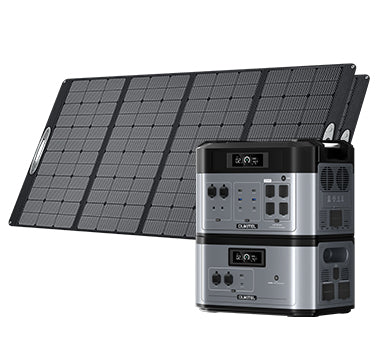Sustainable Indoor Generators: Your Secret Weapon against Climate Crisis!
Navigation
- I. Introduction
- II. The Problem with Traditional Backup Power
- III. The Benefits of Indoor Generators for Sustainability
- IV. Choosing a Sustainable Indoor Generator
- V. Installation and Maintenance Considerations
- VI. Conclusion
I. Introduction
The current climate crisis is fuelled predominantly by human-induced carbon emissions, leading to a warming planet, extreme weather patterns, and environmental degradation. As such, every effort towards reducing our carbon footprint, no matter how small, contributes to the broader goal of sustainable living.
This article aims to delve into the lesser-known aspect of energy sustainability-indoor generators-and their role in forging a more sustainable future.

II. The Problem with Traditional Backup Power
Traditional backup power sources, mainly diesel or gasoline-powered generators, pose significant environmental concerns.
- Greenhouse Gas Emissions: These generators emit high levels of greenhouse gases, including carbon dioxide, methane, and nitrous oxide. These gases play a crucial role in the exacerbation of global warming and climate change. For instance, burning one gallon of diesel fuel produces approximately 22.4 pounds of CO2.
- Extraction and Refinement: The extraction and refinement processes of fossil fuels (diesel and gasoline) have severe environmental impacts. Oil spills during extraction can devastate marine and terrestrial ecosystems. Meanwhile, the refinement process can result in water and air pollution due to the release of harmful substances such as sulfur dioxide and mercury.
- Resource Depletion: The extraction of fossil fuels is also synonymous with resource depletion. As fossil fuels are finite resources, their continuous extraction leads to eventual depletion, challenging the long-term viability of such energy sources.
- Inefficiency: Traditional generators often waste a significant amount of energy, typically as heat, contributing to global warming. They also require constant refuelling, which means more fossil fuel extraction and transportation, all adding up to a considerable carbon footprint.
III. The Benefits of Indoor Generators for Sustainability
As we navigate sustainable living, indoor generators, specifically those harmonized with renewable energy sources, emerge as a potent asset in our sustainability toolkit.
- Minimized Carbon Emissions: Indoor generators, particularly those powered by cleaner energy options or battery systems, dramatically outperform traditional generators when it comes to carbon emissions. To illustrate, generators powered by propane or natural gas are responsible for approximately half the CO2 emissions compared to their gasoline and diesel counterparts. Furthermore, when battery-powered generators are charged with renewable energy sources, they operate with an almost negligible carbon footprint, making them an outstanding choice for the environmentally conscious consumer.
- Synergy with Renewable Energy Sources: One of the most compelling features of indoor generators is their ability to form a symbiotic relationship with renewable energy systems such as solar panels or wind turbines. This integrative functionality facilitates efficient storage of surplus energy generated during periods of peak renewable energy production. Thus, the stored energy can be used when demand spikes or during periods of low renewable energy production. This feature not only contributes to energy self-sufficiency but also aids in reducing grid dependence, underscoring indoor generators as a significant player in the transition to sustainable living.
IV. Choosing a Sustainable Indoor Generator
Selecting the right indoor generator involves more than just checking its power output and price. You need to consider its compatibility with renewable energy, emissions rating, and lifecycle impact.
Regarding power output, you should assess your household energy needs accurately and match them to the generator's capacity. Oversizing the generator not only leads to higher upfront costs but could also result in higher carbon emissions and unnecessary fuel consumption.
Choosing the right fuel type is another crucial factor. While gasoline and diesel generators are common, cleaner alternatives like propane, natural gas, or battery-based systems should be considered for a lower environmental impact. Battery-based indoor generators are particularly beneficial when paired with renewable energy sources, like a home solar power system.
In addition, examine the generator's emissions rating. Manufacturers are required to meet certain environmental standards, which are reflected in the emissions rating of the generator. Lower emission generators contribute less to air pollution and greenhouse gas concentrations.
Finally, considering the lifecycle impact of the generator means accounting for the environmental impact of each stage of its life, from manufacturing and transportation to operation and disposal. Opt for generators made with sustainable manufacturing processes and recyclable components. The generator should also have a long lifespan and disposal guidelines to minimize its environmental footprint.
V. Installation and Maintenance Considerations
The way you install and maintain your indoor generator can significantly affect its environmental footprint. Compliance with local zoning regulations and safety guidelines is crucial to avoid accidents and energy wastage. Moreover, professional installation ensures that your generator operates at peak efficiency, reducing energy waste and emissions.
Maintenance plays a vital role in the generator's lifespan and efficiency. Regular check-ups can identify and fix problems early, reducing energy waste and extending the generator's life. Using eco-friendly cleaning agents and lubricants also reduces environmental harm, and following correct disposal regulations for used parts and fluids helps prevent pollution.
VI. Conclusion
The use of indoor generators presents a feasible solution to energy sustainability by reducing reliance on carbon-intensive backup power sources. As we strive towards a greener future, this technology offers an opportunity to create a more resilient home energy system, one that aligns with our environmental obligations and fosters a more sustainable lifestyle.
While indoor generators are not a one-size-fits-all solution, their thoughtful and strategic integration can undoubtedly play a significant role in our quest for sustainability and a reduced carbon footprint. As Wangari Maathai once put it, "In the course of history, there comes a time when humanity is called upon to shift to a new level of consciousness, to reach a higher moral ground. Perhaps, the use of sustainable indoor generators is a step towards that higher ground.




































 Oukitel Flashlight
Oukitel Flashlight Oukitel Solar
Extension Cable
Oukitel Solar
Extension Cable

















Leave a comment